Financing PPPs: Legal Aspects of Project Funding
Introduction
Public-Private Partnerships (PPPs) represent a strategic collaboration between government entities and private sector companies to deliver public services or infrastructure projects. In recent years, they have gained prominence as a viable funding mechanism for various sectors, particularly in the GCC region. However, the legal aspects of financing PPPs are intricate and demand careful navigation. This article explores the legal frameworks, compliance requirements, and best practices surrounding project funding for PPPs, emphasizing the importance of legal due diligence in fostering successful public-private collaborations.
The Importance of Legal Frameworks in PPP Financing
Legal frameworks governing PPPs serve as the backbone for project funding. These frameworks are crucial for establishing the rights, responsibilities, and risk-sharing mechanisms among stakeholders. A clear legal structure ensures transparency, accountability, and compliance with applicable regulations, which is essential for attracting investment and facilitating project execution.
Understanding PPP Models
PPPs can take various forms, including:
- Build-Operate-Transfer (BOT): The private sector builds the infrastructure, operates it for a specified period, and then transfers ownership to the government.
- Design-Build-Finance-Operate (DBFO): A single contractual arrangement that encompasses design, construction, financing, and operation.
- Lease Model: The government leases facilities from a private entity, who manages and operates them.
The legal implications of each model vary, necessitating tailored legal agreements and frameworks to ensure compliance.
Key Legal Considerations in PPP Financing
Engaging in PPP financing requires comprehensive legal evaluations and strategies. Here are several critical legal aspects to consider:
1. Regulatory Compliance
Compliance with both U.S. and U.K. regulations, as well as local laws in the GCC, is paramount. Understanding the regulatory landscape helps mitigate risks associated with non-compliance, including potential penalties or project delays.
2. Contractual Agreements
Drafting robust contracts is essential for defining the scope, responsibilities, and risks involved in the project. Key elements include:
- Performance Metrics: Establishing clear performance indicators to measure project success.
- Termination Clauses: Outlining conditions under which the contract can be terminated by either party.
- Dispute Resolution: Specifying mechanisms for resolving conflicts, which can include arbitration or mediation.
3. Risk Allocation
Effective risk allocation is vital for ensuring project viability. Risks should be assessed and allocated according to each party’s capacity to manage them. Risks commonly identified in PPPs include financial, operational, and regulatory risks.
4. Financing Structures
Understanding various financing options is crucial for project funding. These may include:
- Debt Financing: Loans or bonds issued to fund the project.
- Equity Financing: Investment from private partners that require ownership stakes.
- Public Grants: Government funds that may be available to support certain projects.
Each financing option has its legal implications and obligations that must be understood by all parties involved.
Best Practices for Legal Compliance in PPPs
To navigate the legal complexity of PPPs successfully, organizations should implement best practices that enhance compliance and reduce potential legal risks:
1. Conduct Thorough Due Diligence
Conducting extensive due diligence helps identify legal, regulatory, and financial issues that may impact the project. It also builds confidence among investors and stakeholders.
2. Engage Qualified Legal Counsel
Working with legal professionals experienced in PPP agreements is essential for ensuring all aspects of the deal are compliant and negotiated in the best interest of the stakeholders involved.
3. Foster Transparency
Transparency in dealings and communications among public and private partners enhances trust and fundamentals of good governance. It also helps mitigate accusations of corruption or favoritism.
4. Continuous Monitoring and Evaluation
Establish mechanisms for ongoing monitoring and evaluation of compliance with contracts, laws, and performance metrics throughout the project lifecycle. This proactive approach can help identify and address issues before they escalate.
The Role of The Consultant Global in PPP Financing
At The Consultant Global, we understand the complexities associated with financing PPPs. With extensive expertise and a multi-cultural perspective, we help organizations navigate the intricate legal landscape of project funding. Our team is uniquely positioned in the GCC and UAE markets, providing tailored consultancy services that align with your business needs.
We pride ourselves on our embedded values of excellence and are committed to becoming your trusted advisor. Our comprehensive knowledge and language skills in English, Turkish, Azerbaijani, Russian, and French allow us to communicate effectively across diverse environments, maximizing the potential for successful collaborations.
Conclusion
The financing of Public-Private Partnerships demands a nuanced understanding of legal frameworks, compliance requirements, and risk management strategies. By keeping abreast of regulations and best practices, organizations can effectively navigate the complexities of PPP financing. Partnering with a proficient consultancy like The Consultant Global not only eases this process but also enhances the likelihood of project success. We are committed to helping you achieve your project goals while ensuring legal compliance every step of the way.




Leave a Reply